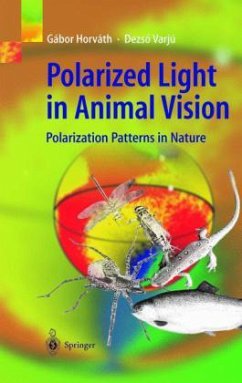While the human eye can practically cope only with two aspects of light, brightness and colour, for many animals polarization is a further source of visual information. This fascinating phenomenon of polarization sensitivity is comprehensively treated by Horvath and Varju. Starting with a short introduction into imaging polarimetry - an efficient technique for measuring light polarization - various polarization patterns occurring in nature are presented. Among them are the polarizational characteristics of water surfaces, mirages and the underwater light field as well as the celestial polarization patterns affected by the illumination conditions of sunrise, sunset, clear or cloudy skies, moonshine and total solar eclipses. The major part of the book is dedicated to the question: How can animals perceive and use the natural and artificial polarization patterns? Following a detailed compendium of the physiological basis of polarization sensitivity, several case studies of animal behaviour determined or influenced by polarization are presented. It is shown how arial, terrestrial and aquatic animals use the celestial and underwater polarization for orientation, e. g. how polarized light serves honeybees or ants as a compass. Further, it is explained how man-made objects affecting the natural optical environment may disorientate animals. For instance, as in the case where oil or glass surfaces, asphalt roads, or plastic sheets used in agriculture can be more attractive for water-seeking polarotactic insects than the water surface, and where mayflies lay their eggs on dry asphalt roads or cars.
Bitte wählen Sie Ihr Anliegen aus.
Rechnungen
Retourenschein anfordern
Bestellstatus
Storno

